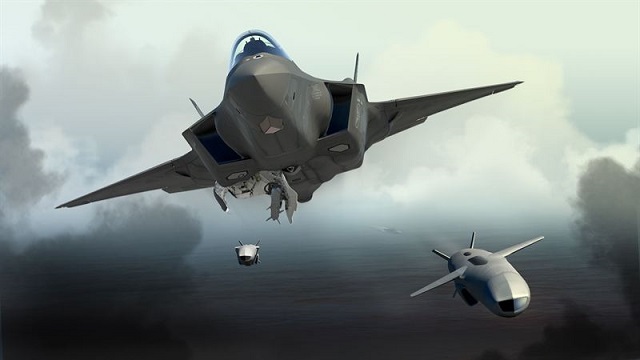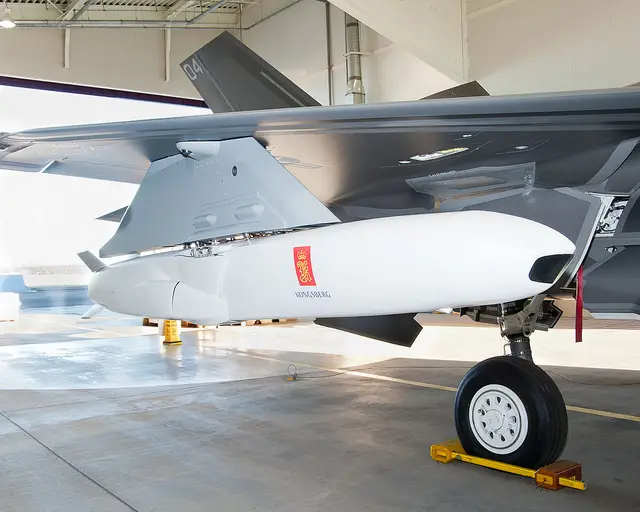Breaking news
Australia to Finance the Development of a New Seeker for Kongsberg's Joint Strike Missile.
| 2015
| |
|||
| a | |||
Naval
Defense Industry News - Australia, Norway |
|||
Australia
to Finance the Development of a New Seeker for Kongsberg's Joint Strike
Missile |
|||
On
15 September Norway and Australia signed an agreement where Australia
will finance the development of a new capability for the seeker in the
Joint Strike Missile (JSM,
the air launched variant of the NSM - Naval Strike Missile),
developed by Norwegian company Kongsberg Defence Systems (KDA). If Australia
later decides to procure the JSM, then Norway and Australia will share
the cost of integrating the JSM on the F-35. This formalises the initial agreement reached during the visit by Norwegian State Secretary of Defence, Mr. Øystein Bø to Australia in February 2015, and beyond providing Norway with a missile that is both more capable and more competitive on the international market, it also marks the first time another nation has opened for the possibility of covering some of the costs related to the JSM. |
|||
 Artist Impression: An F-35 launching two JSM anti-ship missiles. Image: Kongsberg |
|||
The
JSM will provide one of the core capabilities of the future Norwegian
Armed Forces, and this agreement not only confirms that other nations
are seeing the value of what this missile can deliver, but also that
they are prepared to help make it even better. Even if this so far doesn't
change our costs related to developing and integrating the JSM on the
F-35, it nonetheless ensures that we will get even more in return for
our own investment in the missile, says Norwegian Minister of Defence,
Ms. Ine Eriksen Søreide. On Monday the 21st of September, Ms. Eriksen Søreide visited Lockheed Martin's manufacturing facilities in Fort Worth, Texas, where the F-35 is being built. On Tuesday the 22nd of September she will be participating in the formal roll-out of the first Norwegian F-35 along with the Norwegian Chief of Defence, Admiral Haakon Bruun-Hanssen, senior leadership in Lockheed Martin and Frank Kendall, US Undersecretary of Defence for Acquisitions, Technology and Logistics. The roll-out ceremony will also include representatives from several other nations within the F-35 partnership, and the Minister of Defence believes this new agreement highlights the value of the close multinational cooperation that the F-35 helps foster. This agreement is a prime example of instances where two nations, each bringing their own specialities and skills to the table, are able to build a better system by working together compared to what they could have done on their own. This, in a nutshell, is what the F-35-partnership is all about, and it is an important example of the kind of positive ripple effects the program helps generate beyond the aircraft themselves, says Ms. Eriksen Søreide. |
|||
 On 27 February 2013 Lockheed Martin carried out the first external fit check of the JSM on an F-35. (Photo: Lockheed Martin) |
|||
Accoding
to the Norwegian Ministry of Defence JSM is the only long-range anti-surface
missile that is specifically designed to fit within the internal weapons
bay of the F-35, and is being developed by the Norwegian company Kongsberg
in partnership with the Norwegian Ministry of Defence. The missile provides
the F-35 with operational characteristics, and enables it to fight the
objects protected by advanced defense systems. This is vital in order
to be able to perform all types of operations in the defense of Norway.
By using a combination of advanced materials, an ability to fly low,
while following the terrain and an advanced passive seeker, the missile
will prove both extremely difficult to detect and stop even for advanced
countermeasures and defence systems. The current seeker that is being
developed for the JSM is based on a technology known as "imaging
infra red" that enables the missile to detect and identify targets
based on its heat signature. Under the terms of the newly signed agreement,
BAE Australia will be tasked by the Australian Government to integrate
a RF-seeking capability on the missile, which will enable to also locate
targets on the basis of their electronic signature. This will further
strengthen the ability of the missile to locate and identify targets
on a modern battlefield. Link to NSM/JSM technical datasheet |


























